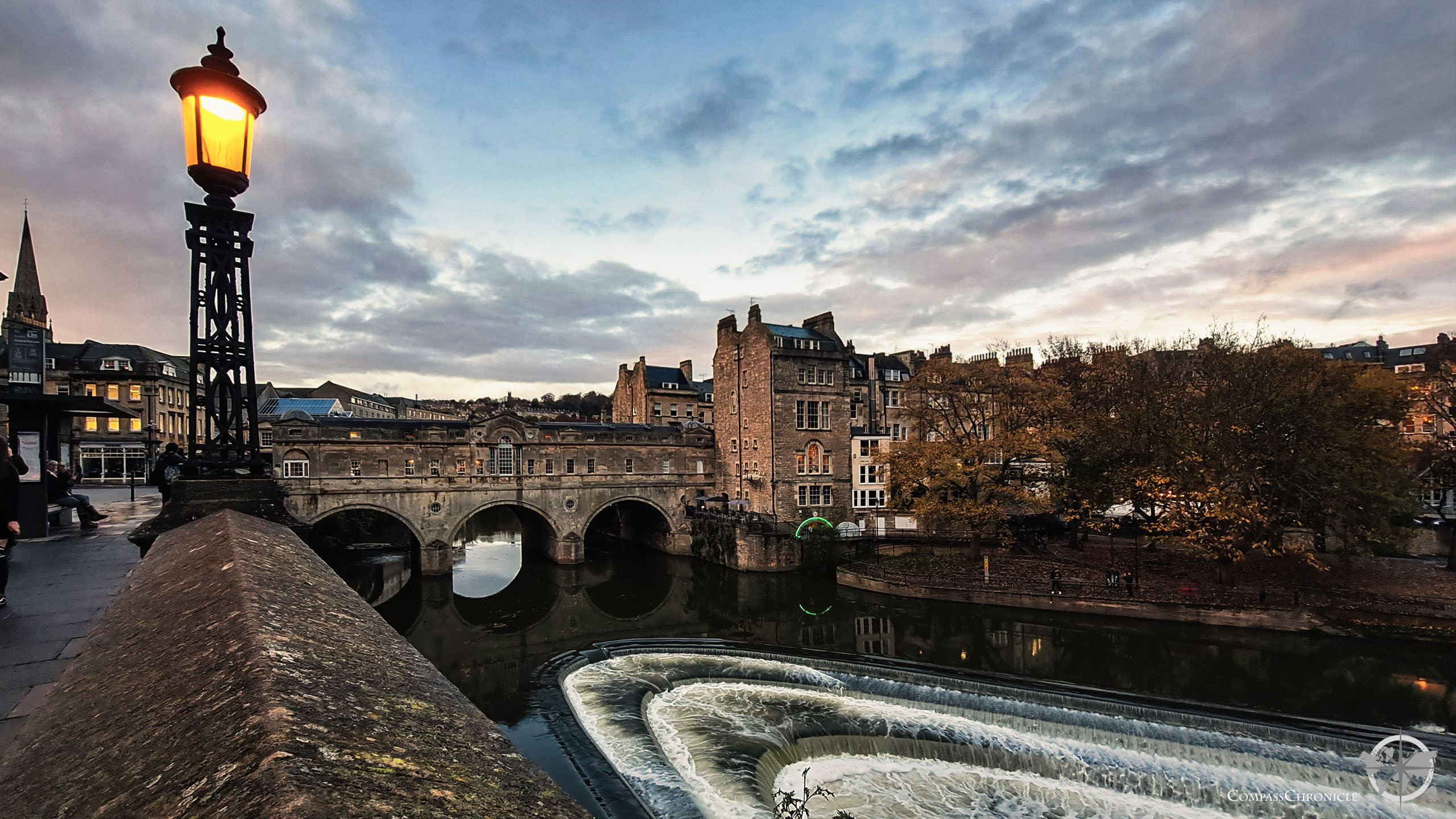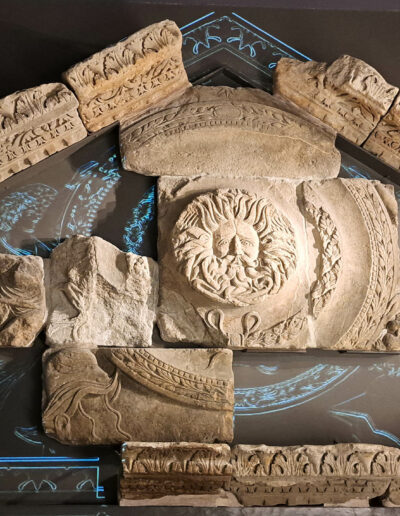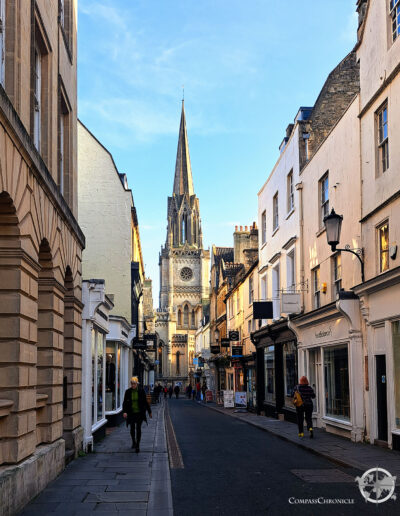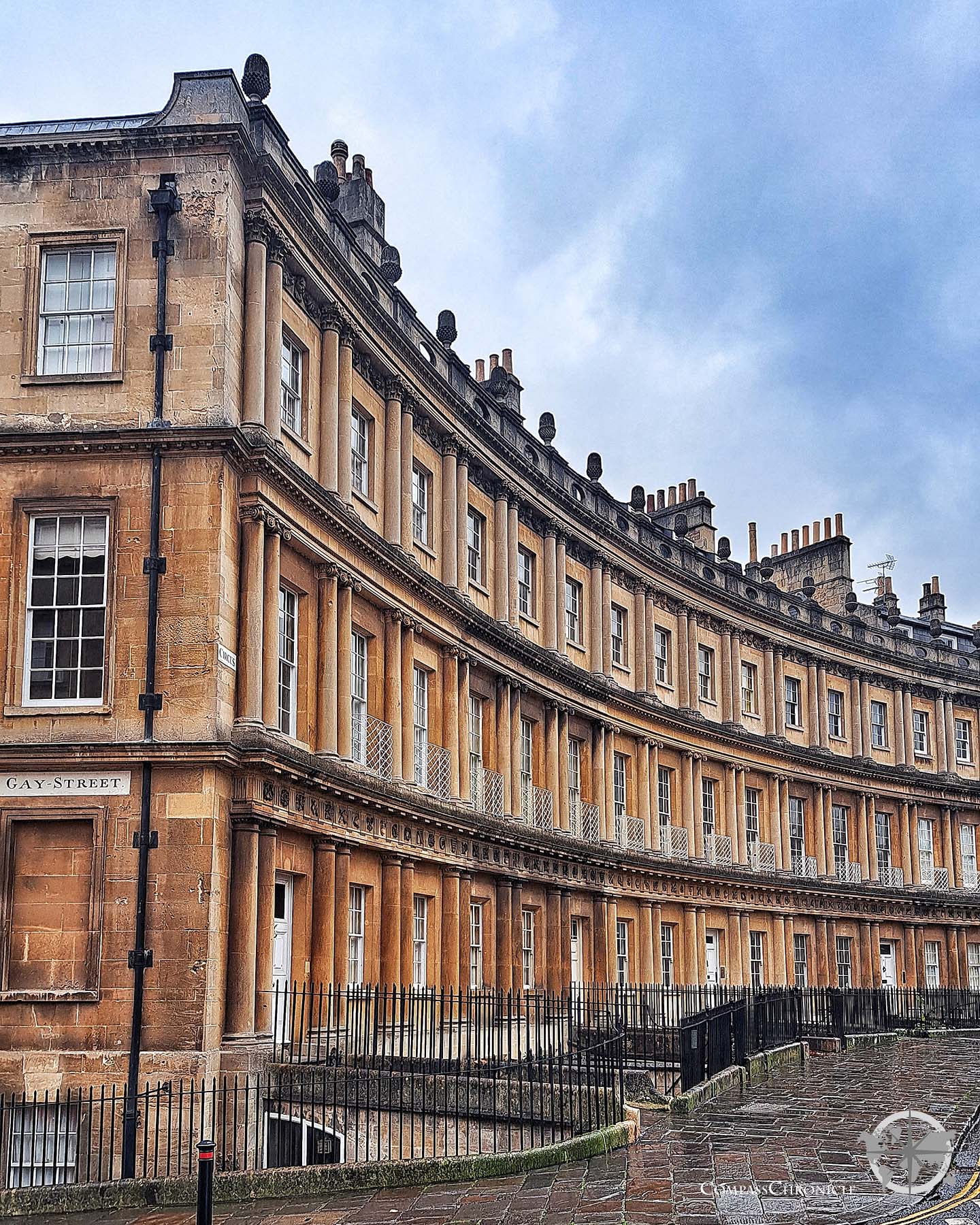Bath – as the English name suggests – really has a lot to do with a bath. The city has a long history and was already known for its Roman baths in Roman times. Here natural warm springs flow to the surface and these were used by then Romans as baths. They are also the only known hot springs in the whole of England.
The Roman bath in Bath
Around the hot springs, the Romans built fixtures and pipes to channel the water through different pools. This made bathing possible for the different classes. Moreover, the mythology had to be duly taken into account in the constructions. Thus, in the heyday of the baths, there was also a temple directly connected to it, as well as many ornamental statues.
Also, for the warmth of the air had to be provided. Thus, a precursor of today’s underfloor heating can still be seen today. The air was heated by large ovens. The heated air was then passed through spaces about 1m high under the floors of the bathrooms to warm the floors evenly.
And the really impressive: As a result of the restoration, the original water ducts are back in use. The drainage channel of the baths has also been restored to a largely original state and still flows under the exhibition and on to the river outside.
Ticket prices vary throughout the year and whether it is a weekday or weekend day. We paid £17.50 per person on our visit. Booking online in advance is worthwhile – visitor places are limited in high season!
Just to make this final point clear: It’s a museum, not a bath anymore – you don’t need to pack your swimsuit for this stop.
Bath Abbey
Right next to the Roman Baths is Bath Abbey Church. We were particularly taken with the fan vaulting and the colored windows. It is an older church but nevertheless in excellent renovated condition. A special feature is the high altar window which shows 56 scenes from the biblical life of Jesus Christ. Once again, the stonework is very impressive, not only in the fine ceiling framework but also the countless tombs in the outer walls of the church with the many elegant figures.
The Abbey Deli
After these two sights, we are due for a break. Therefore, we stroll through the nearby side streets in search of a vegetarian snack. And by chance we stumble upon The Abbey Deli – a typical English café. The interior is wildly mixed and yet fits together quite well. The house itself is already a sight to see as many extremely old wooden walls, floors and other components are preserved. Fortunately, the menu matched as well. So, as we wait for our food after ordering, Mimi suddenly remembers: This is a setting from a series: Bridgerton. For all those who are interested in historical-romantic series, this stop should have special value. Sometimes there are just such coincidences!
The Circus
This circular row of houses with three entrances is particularly special. The row of houses is multistorey and divided into small segments. But the distribution gets even finer: there are often six to eight doorbells on each door of a narrow segment. We wonder how many apartments and families may be housed in this circle. We didn’t find an answer, but the sight is quite impressive!
The Royal Crescent
The Royal Crescent is another specially arranged row of houses. In this case, the townhouses were arranged in a semicircle about 150m long. In addition, the houses are terraced to accommodate the terrain. This is also an exciting phenomenon – today this construction method would hardly be realized for various reasons. Unfortunately, light rain sets in during this sightseeing tour. Because of that we turn around and go back towards the city center.
Jane Austen Center
As a book connoisseur, Mimi is drawn to the Jane Austen Center. This center is dedicated to the author of the same name and highlights the life of Jane Austen to the greater part and her works to the smaller part. Apparently, a visit is only possible with a guided tour and so the guided tour through the center always takes about 50 minutes. Jane Austen not only lived in Bath for some time, but also many of her novels refer, partly directly, partly indirectly, to the city. Thus, Jane Austen plays an important role in Bath and once a year there is a Jane Austen Festival in Bath, where all participants dress true to the original and attend events such as balls and play tournaments.
Pulteney Bridge
Pulteney Bridge is exciting from an architectural point of view. But also for all other interested people it is worth a visit. It spans three arches over the river Avon. Both sides of the roadway on the bridge are additionally equipped with narrow rows of houses. Thus, one on the bridge does not notice at all that one stands on a bridge. As soon as we enter a store or café, the wonderful view over the river opens up. A special peculiarity and something special that we both have never seen in real before.
Thermae Bath Spa
The absolute highlight for both of us during our visit to Bath is probably the Thermae Bath Spa. After so much history about Roman baths and how Bath has developed over time, it is a must for us to plunge into the warm water. Without further ado we book a visit to the thermal spa. The Thermae Bath Spa is the only thermal bath, which offers a rooftop pool directly in the center of Bath. Probably because of this, but certainly not only, the entrance fee of just under 40£ is not exactly cheap. There are also various saunas and steam baths, which are available for shared use – these are not particularly lovingly prepared, but also not in bad condition. We would have liked to see this area of the spa a bit better. As an additional plus point, we find that the bath water is fed by the natural thermal springs. For us it’s worth it and so we conclude our stay in Bath with a bath.
Weekdays: 38£ per pax
Weekend days: 43£ per pax
Bath is a wonderful city for sightseeing as well as immersing yourself in a historic city. We would come here again with a less dense program to just enjoy the city itself for a day or two.
Park&Ride
Like many English cities, Bath offers several Park&Ride to park outside the city and comfortably take the bus into the city. We used this possibility once more and can recommend it to everyone.
We used the Lansdown Park&Ride, as it has no height restriction, and for £3.60 per person we could take the bus into the city and back. This saves the long search for a parking space and high parking fees in the city.
Only downside: the last bus in the evening from the city to the parking back is already at 20.30.















0 Comments